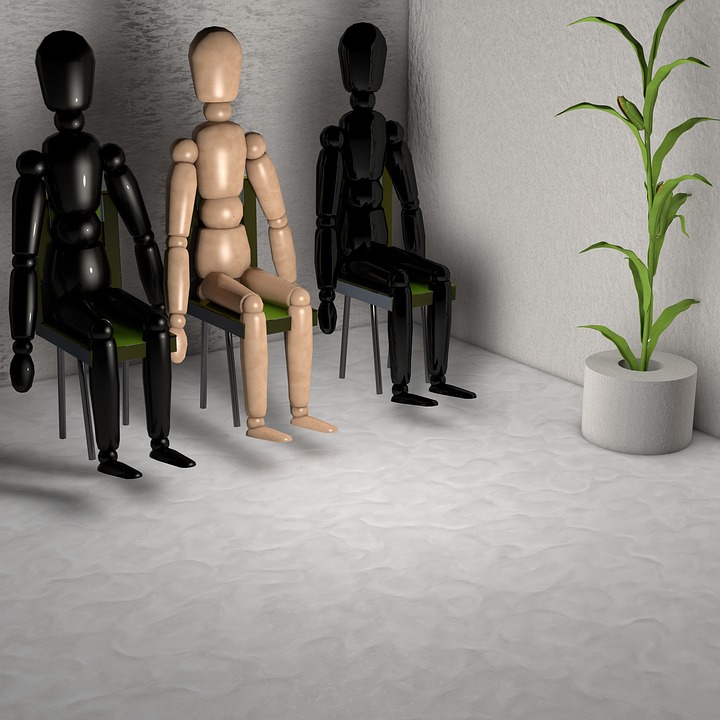Millennial Depression is Spiking, According to 2019 “International Journal of Epidemiology” Study

Image courtesy of Pixabay.com
What percentage of millennials has a mental health issue? It may come as no surprise to anyone, but there is an upward trend in the incidence of reported mental-health related issues in the world today.
A February 2019 study published by the International Journal of Epidemiology shows that those from the millennial generation are more prone to depression and self-harming behaviors than they were a decade ago. This comes even in the wake of continuing reported declines in substance abuse rates and anti-social behavioral trends.
For as long as anyone can remember, teenagers and young adults have been considered to be self-centered, emotionally unstable, and irrational. Usually by those older than this age group. Adults have been known to gripe about how millennials are moody and unable to “leave their problems at the door,” and that it’s a problem for the workforce’s (and hence, society’s) stability in the future.
Depression levels among those born between the years 1990 and 2000 have risen up to almost 15 percent, and self-harm rates are up to 14 percent among this group. This is not only a problem for the individuals themselves, but also an increasing public health challenge.
What is causing this upswing? The reasons don’t seem readily clear. As some studies report on observable data, not all are designed to analyze the backstories behind the data. The next step is to figure out the “why” behind the increase.
Theories
The study indicates that obesity rates among this age group nearly doubled in the last 10 years (From less than 4 percent to more than 7 percent), and that that this increase in depression levels might be tied to the weight gain.
It’s also worth noting that 29 percent more of those born around the turn of the century thought they were overweight when compared to those born in the early 1990s.
The obesity concern, coupled with poor sleeping and eating habits, along with negative body image is being looked at as at least one of the source problems.
The interpretation of the data and the framing of it becomes more complicated, especially considering the decreases in youth substance abuse and anti-social behavior, which could understandably be considered to be good things. A better understanding regarding the nature of these dynamics could be very valuable in determining risk factors for mental illnesses, as well as developing effective ways to approach and deal with relevant core problems.
Despite all the good news regarding declining substance abuse and anti-social behavior rates, researchers are seeing that American youth are developing severe mental illnesses at an increasing rate.
The U.S. Department of Health and Human Services (HHS) reports that about three million teenagers (aged 12-18) showed at least one major depressive episode in 2015 alone, and that in excess of two million from the same group reported experiencing depression to a degree that interfered with their normal daily activities.
Possibly more unsettling is that these number are likely to continue on the upswing. According to a study published in Time magazine designed to track depression among young adults, the number of reported symptoms of low self-esteem and problems with concentration and sleep rose by 37 percent between 2015 and 2016.
Cases of anxiety have also spiked in the last few years.
- The Anxiety and Depression Association of America (ADAA), reports anxiety disorders as the most common mental illness in the U.S., affecting just over 18 percent of youth annually.
- The National Institute of Mental Health (NIMH) indicates that over six million American teens have some sort of anxiety disorder.
Anxiety has passed depression as the most common reason college students seek mental health consultation. The number of undergraduate college students claiming “overwhelming” levels of anxiety due to school work and college life rose from 50 percent to 62 percent between 2011 and 2016. It would appear that more pressure than ever before is being placed on kids to not just succeed, but to outperform everyone else.
The “Why?”
Though no one seems to be exactly sure what cause to pinpoint as the source of this increase in the levels of millennial mental illness, most camps can agree that it is probably a combination of many different dynamics factors.
Consider that anxiety and depression have recognized biological causes, including many that are not just genetic. For example, researchers have shown that human stomach bacteria may be influencing the functions of regions in the brain, like the prefrontal cortex and the amygdala (both have been causally tied to anxiety and depression).
A significant number of experts agree that environmental and societal changes are having a heavier impact on teens and young adult mental health than genetics or digestive bacteria, however.
Researchers have also blamed technology and social media. Everyone is connected on the internet, and it’s difficult for the youth to not be constantly worried about their digital image and to compare themselves with peers.
Ultimately, we have yet to determine how to address the problem. The increasing demand for mental health help reveals an increasing lack of available public resources to help.
Are you anxious about your lack of sleep? Is your lack of sleep making your depression and/or anxiety worse? Depression and anxiety are both treatable, and their treatment usually leads to a better night’s sleep. If you or someone close to you need to talk to someone about mental health issues that seem overwhelming, we can help. Consider reaching out to our expert team at Solara Mental Health at 844-600-9747.




Leave a Reply
Want to join the discussion?Feel free to contribute!